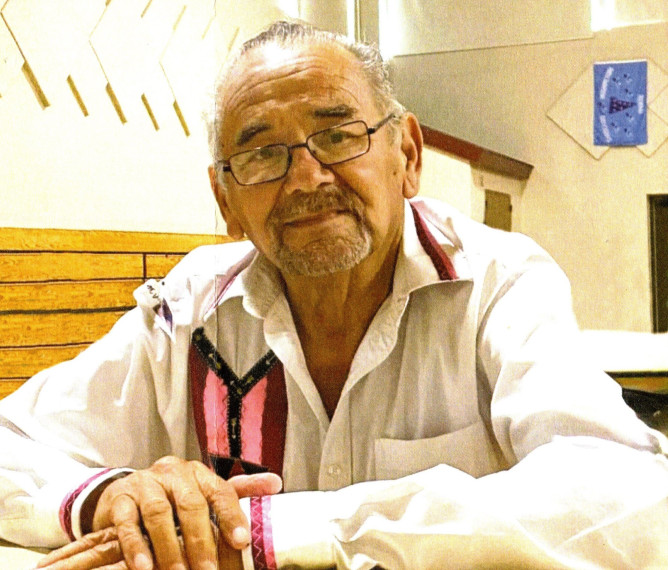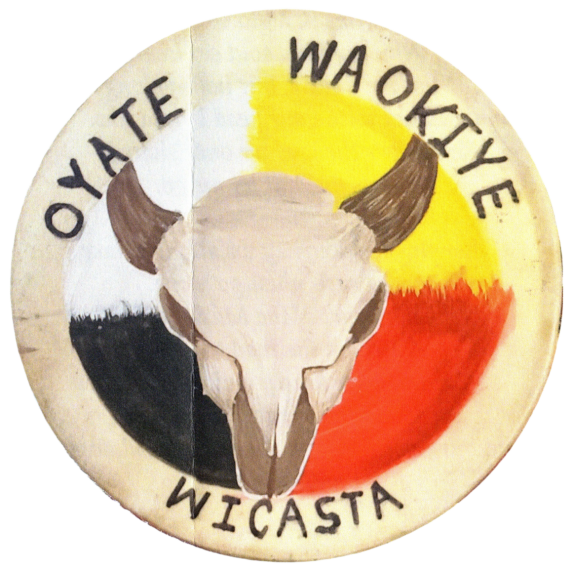


A medicine man I’ve known for over 20 years, Russell Smith, died yesterday from cancer. He was a very good man. He asked that I be listed as an honorary pallbearer at his funeral. The time hasn’t been set yet, but I will try to go to it at Sisseton next week. The funeral is actually at a town called Agency Village, the tribal headquarters for the Sisseton-Wahpeton Oyate.
Russell is being buried (after the ground warms up) in a buffalo robe - no casket. He wanted to do things like in his great-grandfather’s day.
Russell Smith’s funeral on Jan. 26, 2023, was the first Dakota funeral I have attended. The other indigenous funerals I attended were West River Lakota Funerals. There were some similarities in the set-up with star quilts hanging on the wall at the front of the room, tables with flowers and photos on either side of the deceased, and a drum group in one corner at the front who sang at various times during the ceremony. What was different was that Russell’s body was wrapped in a buffalo robe on a wooden platform on a bier at the front, while the Lakota funerals I’ve attended have had open coffins often with a sweet grass braid and/or sage inside. The Lakota funerals have had tables on the sidewalls near the front with decorated sheet cakes on them. If the person was in the military, the sheet cake might have the logo from his branch of the service on it or there might be a picture of the person spray painted with icing on top of the cake. There was just one table on the side at this funeral and it had packages of cookies on it.
Lakota funerals had a main course of buffalo soup and fry bread after the funeral service. At this funeral there was an assortment of soups brought out and placed on tables with frybread – chili, chicken with wild rice, and buffalo vegetable soup. They also had a main serving line to get slices of roast buffalo, mashed potatoes, and gravy.
Most of the Lakota funerals I’ve attended have started about an hour late. This one started 5 minutes late. (Russell always was on time when he came to run sweats at the prison.) At both Lakota and this Dakota funeral people were invited to come to the microphone to talk about the deceased. I spoke briefly about how the inmate appreciated having him come to the prison to pray with them. The end of the formal service consists of everyone there shaking hands with the pallbearers and all the family members before the body is taken out to the hearse. At this funeral the family members came back in to form a large circle and have a pipe ceremony.
Many of the women wore ribbon skirts. Some of the men wore ribbon shirts. No men wore suits except the funeral director. Most people were nicely dressed wearing blue jeans and a nice shirt. As people were eating, Russell’s sister had people help her take down the star quilts and she called people using a microphone to take the quilts. She called me and my supervisor, Tammy, to take one for the men in prison to hang on the wall during powwows.
I am still astonished that I was listed as an honorary pallbearer. I was Russell’s escort into the prison many times over the years and I took him and his long-time partner to lunch when they were here. I didn’t know his children and was never at his house nor was he at mine. I learned at the funeral that he had a great devotion to the homeless in his community besides the inmates and that he raised his children alone as well as housing some other children who preferred not to go home. He was surely a very good, humble man.
Mary Montoya